The last time I rode a Yamaha YZF-R15 I was ripping around Sydney Motorsport Park like a teenager, slipstreaming, ducking and weaving while trying to pass an equally ‘old’ bloke on another R15. I could hardly see for the tears in my eyes I was laughing that hard. What a blast!
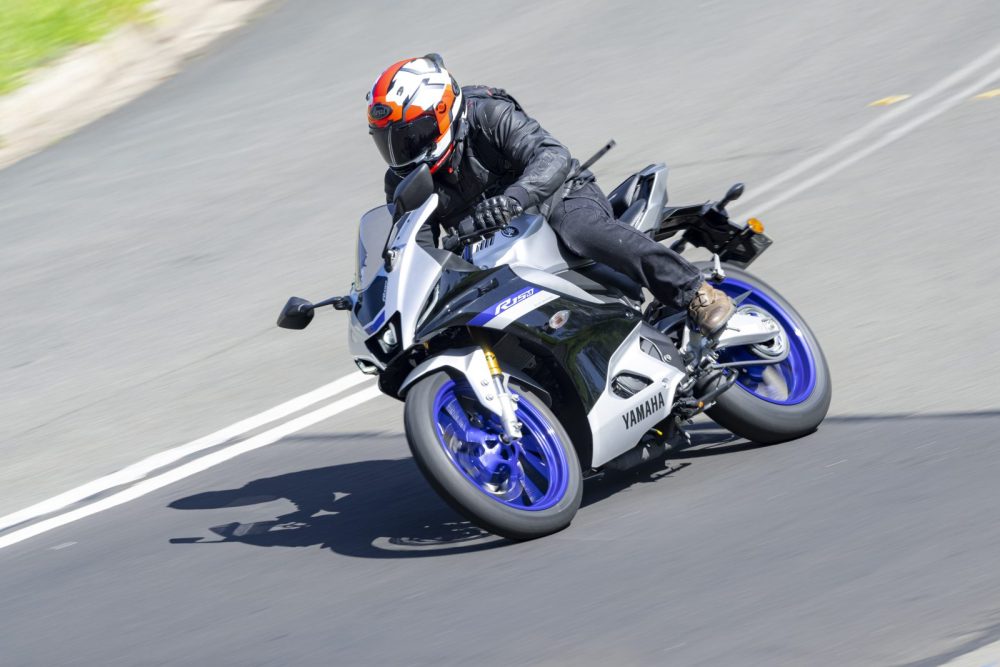
Yamaha has recently seen fit to upgrade the smallest model in its supersport range, and in doing so has created an even more fun tiny tearaway. And while the YZF-R15M now sports an M indicating it’s a top-tiered item, there’s still only one version on offer for 2023 and this is it. Sure, the R15M’s little 155cc water-cooled single only musters a claimed 13.5kW (18hp) at 10,000rpm and 14.2Nm at 7500rpm, but if you keep it on the boil and stay clear of the brakes before throwing it into a corner you won’t believe what you can get away with.

At 140kg wet, the YZF-R15M is so light and nimble that throwing it from side to side is, appropriately, child’s play… and it’s backed up by well-sorted suspension with a new upside-down fork, an upshift-only quickshifter, a decent braking package and, believe it or not, a traction control system (TCS).
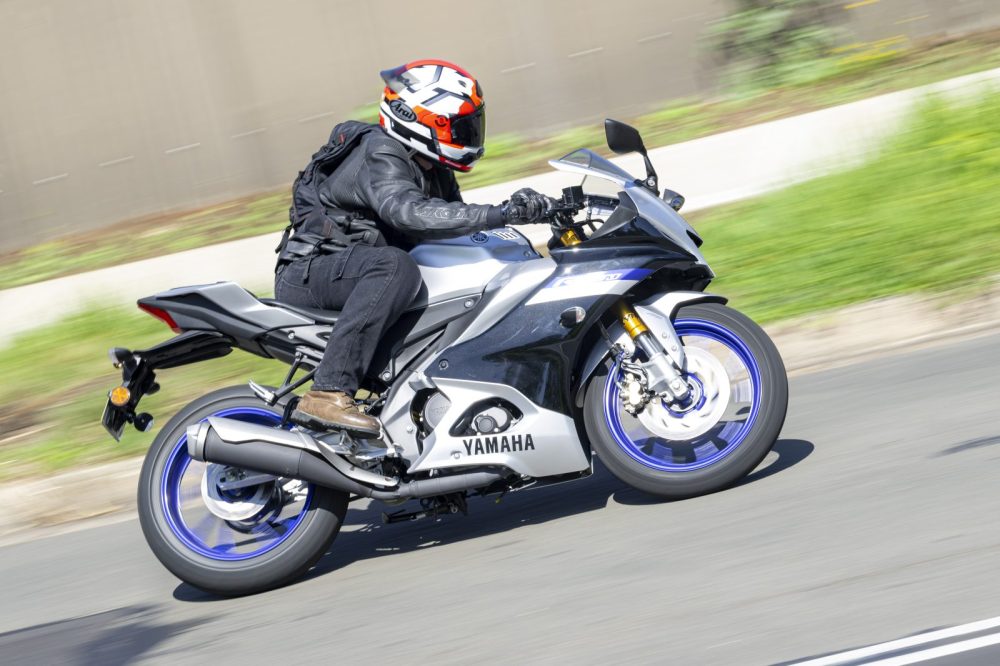
For 2023 the R15M’s engine also gets Variable Valve Actuation (VVA), but I’ll get to that in a bit because in this market segment one of the most important aspects is how a bike looks. The revised styling has a race-inspired look that takes cues straight from Fabio Quartararo’s MotoGP machine, with a YZR-M1-style air intake in the nose – housing a discreet LED headlight – and a bubble-screen that’s easy it to tuck in behind – vitally important when you have fewer than 20hp to play with.

The front-end features LED positioning lights that are aimed at giving the YZF-R15M a big-bike look, the area around the headstock has a trick slotted top triple clamp and blue anodised fork caps, while the rear bodywork features bang-up-to-date air ducts reminiscent of a Ducati Panigale or a Triumph Street Triple.

While it doesn’t score the colourful TFT display that’s available in some other markets, the small-ish LCD screen offered in Australia shows a wealth of info and is easy enough to read, and the switchgear is simple and easy to master. Important information such as speed, engine revs, gear position and fuel level are always visible, and you can scroll through other important details like trips and fuel consumption via a button on the right-side switchblock.

Small finishing touches like the chrome badges on the fuel tank and the embroidered ‘R15M’ on the pillion seat add a touch of class to a bike that is just $6299 ride away. The swingarm looks trick with the chain running through it, and the muffler cover and endcap cleverly disguise what is a basic, black-painted mild-steel exhaust system. The paint finish on the tank and fairing is top notch, too, our testbike supplied in the Icon Performance colour scheme. For those old enough to remember Yamaha’s rich racing history, the YZF-R15M is also available in the 60th Anniversary WGP colour scheme, with red and white plastics, gold wheels and a yellow plate up front.

The VVA system features two inlet valve cams that switch over at 7400rpm, and this arrangement is aimed at maximising torque throughout the rev range. VVA makes the YZF-R15M feel more responsive low in the rev range than a 155cc engine has a right to and, considering its modest capacity, it pulls cleanly if a little lethargically from 5000rpm but is still happiest at or above the quoted 7500rpm torque peak.

Low gearing makes it easy to keep the engine on the boil, as does the one-way quickshifter – the first of its kind on a single-cylinder Yamaha roadbike. There are a series of shift lights across the top of the instrument binnacle, and in the lower gears these illuminate rapidly. The quickshifter is fantastic on a small-capacity bike like the YZF-R15M where you need to maintain momentum as you bang up through the ratios, and with throttle wide open there’s enough acceleration on offer to keep most of the traffic in your mirrors… unless you miss a cog. The quickshifter is reluctant to shift on partial throttle and I hit neutral a couple of times when upshifting from first to second, but on full throttle this wasn’t an issue.

While downshifts require you to pull in the clutch lever, the Assist and Slipper (A&S) clutch feels light and progressive, and it minimises the chance of rear-wheel lockup when downshifiting. Traction control seems like overkill on such a small bike. On the YZF-R15M it operates by adjusting the ignition timing and fuel volume if wheelspin is detected and, while I never once felt it engage, TCS would no doubt be a handy safety aid in slippery conditions and it’s a good inclusion on a bike like the R15M that is aimed at young novice riders. The TCS is said to be more active in Street ride mode than in Track, although I could hardly tell the difference and ran the bike in Track mode for the duration of the test.

The best I saw out of the YZF-R15M was an indicated 130 clicks in top gear, at which point most of the shift lights are lit up like a Chrissy tree. To maintain speeds above 110km/h you really need to get your chin down near the tank with arms tucked in, because once you sit up wind resistance can wash off 10-20 clicks in a heartbeat.

Despite being a small bike, the riding position offers reasonable space to stretch out. The YZF-R15M is so narrow you can easily hang off the side of it and, while the handlebar is quite low, it’s only a short reach away so there isn’t too much weight on your wrists… especially at highway speeds. The footpegs are up nice and high, so there’s plenty of ground clearance when cranked over, but they are not positioned so high or far back that you’ll feel cramped.

The non-adjustable suspension setup consists a 37mm USD fork with 130mm of travel and a linked monoshock with 90mm of travel. The spring and damping rates felt well suited to my 78kg, and ride quality was impressive for such a light bike, even over crappy surfaces.
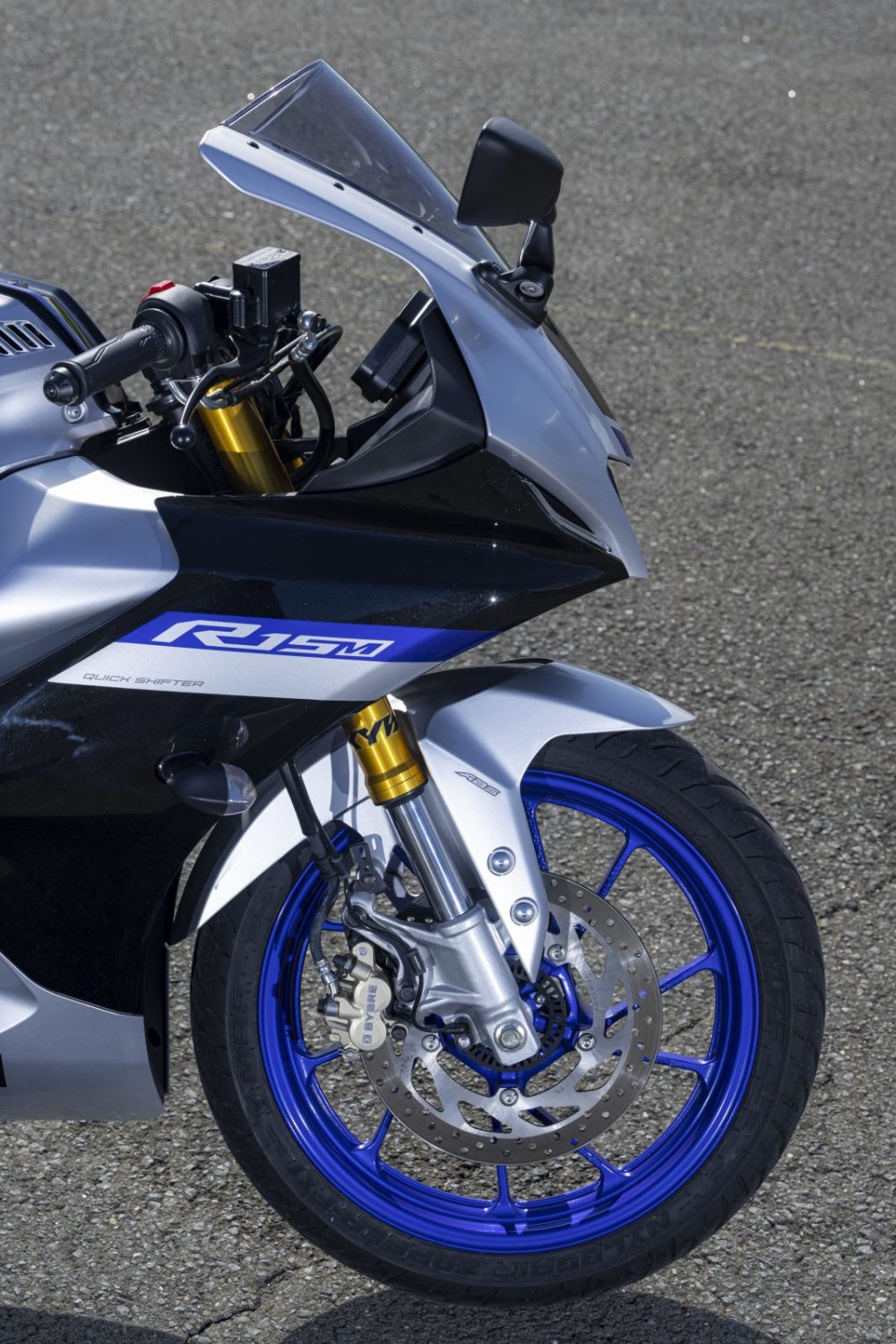
A twin-disc setup would look better than the R15M’s single 282mm disc, and it would offer better feel and stopping power, but there is certainly adequate braking performance on offer. There is no span adjustment for either the brake or clutch levers, so if they are not to your liking you’ll have to source aftermarket replacements.
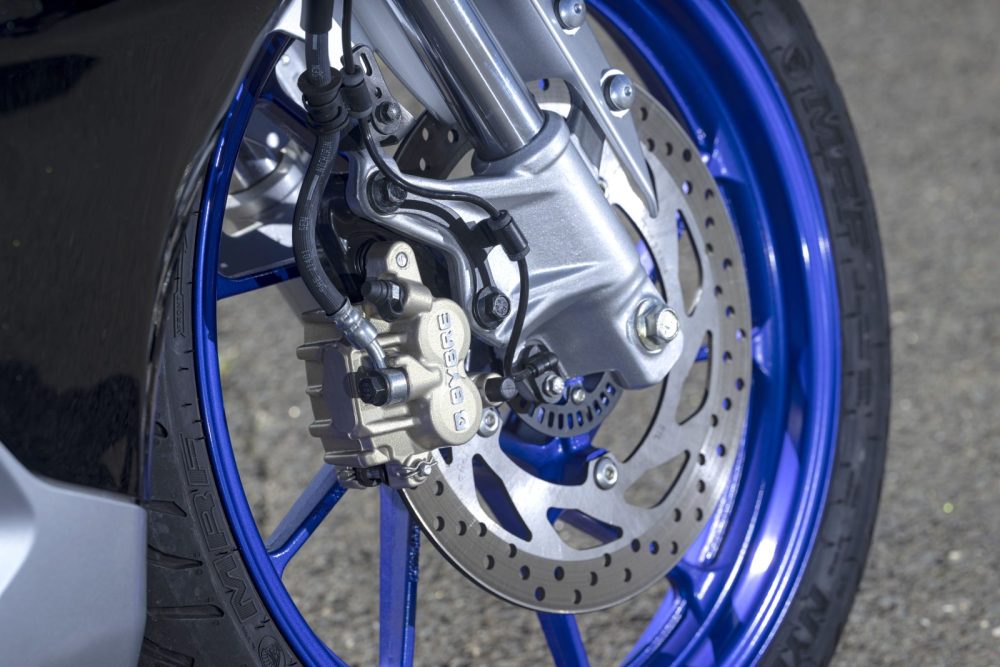
I didn’t push the MRF REVZ-S rubber – a 100/80-17 up front and 140/70-17 at the rear – hard enough on the road to criticise it, and I didn’t get the chance to test the R15M in the rain. The bike felt planted when cornering in the dry and stability when braking hard was faultless, while the ABS activation felt well sorted.
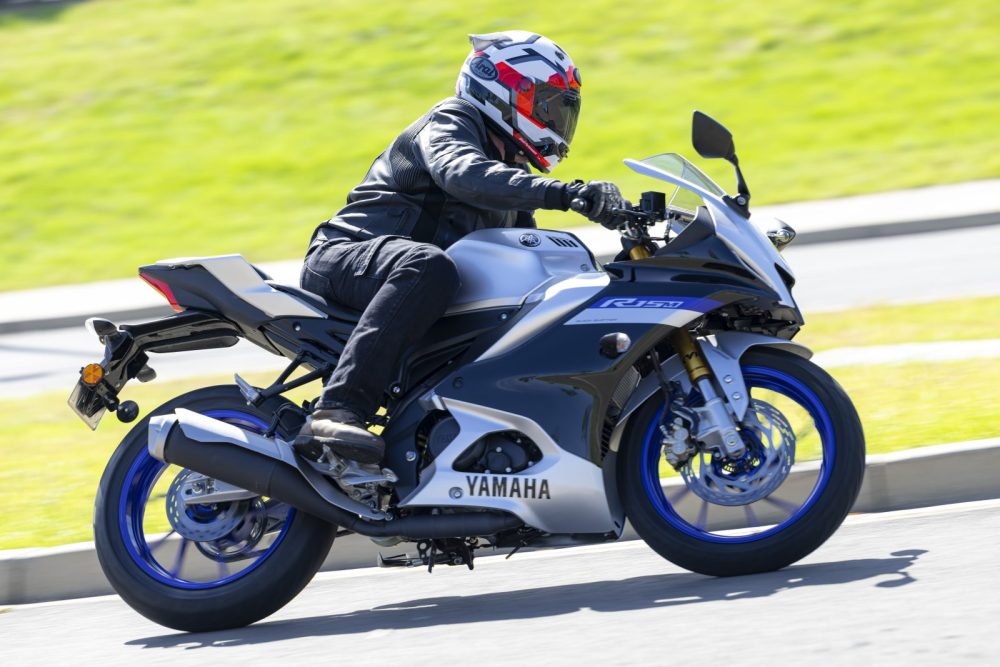
The YZF-R15M is compatible with Yamaha’s Y-Connect app, which shows phone notifications, diagnostic info, parking location, fuel-consumption tracker and more. A cool feature for the kids is the live tacho that can be displayed on your phone, although it’s a bit gimmicky and I can’t see any real benefit to it.
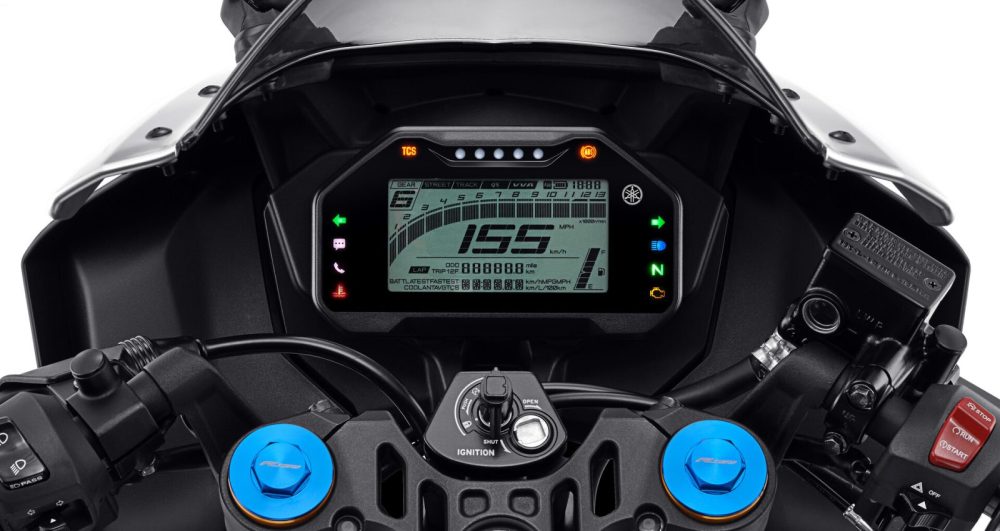
The pillion seat looks big enough for young’uns to throw their other halves on the back, although passengers will be perched quite high. Securing luggage on the back seat could be problematic due to the fancy bodywork around it, so a tankbag or a backpack would be better options.
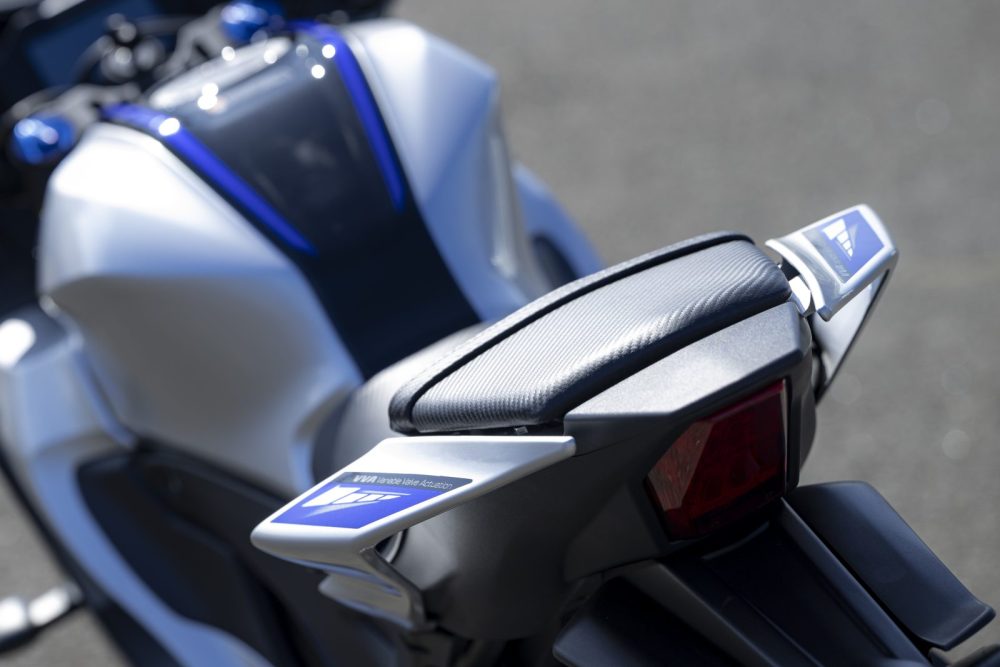
The fuel tank is a tiny 11 litres but on test the YZF-R15M sipped the go-juice at a teetotalling 2.5L/100km, so you should get more than 400km out of a tank – and it’ll only cost you 20 bucks or so to fill it up!
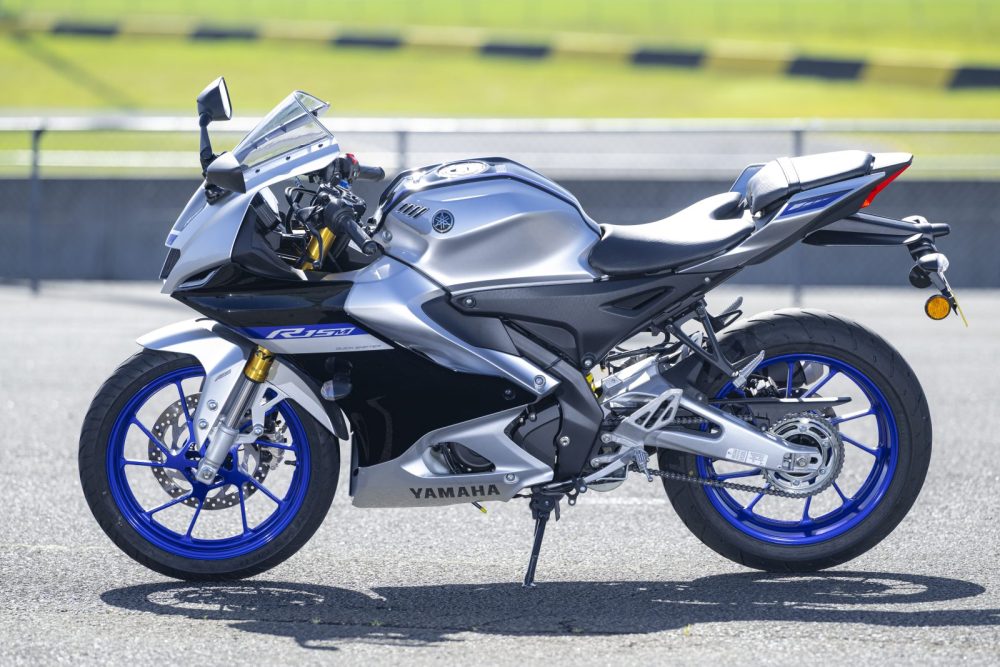
That’ll please young blokes and blokettes just at the start of their motorcycling odysseys. In fact, there are a whole lot of things about the YZF-R15M that will please the target audience; it’s affordable, it’s fun and it looks great.
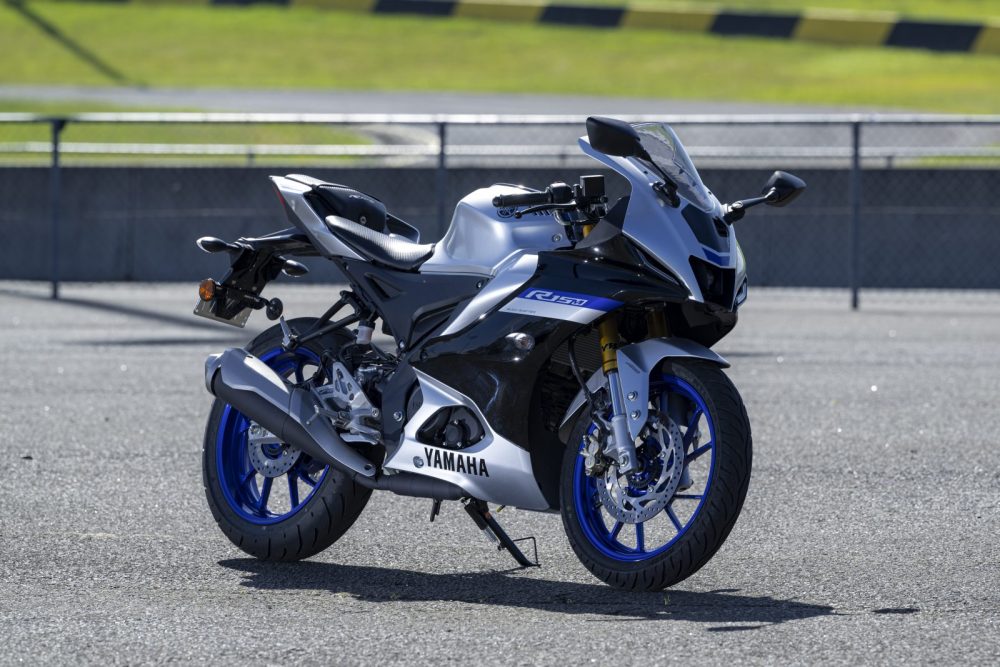
Test Dean Mellor + Photography Incite Images











